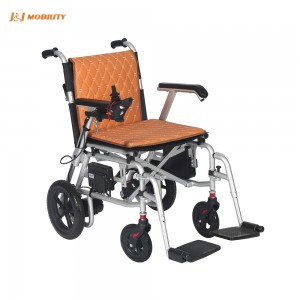Brushed Motors vs. Brushless Motors in Electric Wheelchairs: Understanding the Differences
Electric wheelchairs enhance mobility and independence for individuals with physical disabilities and older adults. A critical factor in determining the performance and efficiency of an electric wheelchair is the type of motor it uses. In this article, we will explore and compare the key differences between brushed and brushless motors used in electric wheelchairs.
Limitations of Brushed Motors
1. Wear and Maintenance: Brushed motors have been a common choice in electric wheelchairs for many years. They consist of rotors, brushes, and commutators. As current flows through the brushes and commutator, the rotor turns to provide propulsion. However, this traditional design comes with several drawbacks. The brushes experience friction and wear over time, requiring regular maintenance and replacement, which can increase downtime and operating costs.
2. Limited Service Life: Due to the physical contact between brushes and commutators, brushed motors have a finite service life. The continuous wear and tear between these components lead to eventual failure, necessitating periodic replacements and repairs.
3. Lower Efficiency: Brushed motors are generally less efficient compared to their brushless counterparts. The friction from the brushes generates heat, resulting in energy loss and reduced overall motor efficiency.
Advantages of Brushless Motors
1. Enhanced Durability: Brushless motors are an advanced alternative to brushed motors, employing electronic commutation instead of mechanical brushes and commutators. This design eliminates the need for regular maintenance and replacement of brushes, offering greater reliability and a longer service life.
2. Improved Efficiency: Brushless motors operate more efficiently by avoiding brush friction. Electronic commutation reduces energy loss, leading to better battery life and extended driving range for the electric wheelchair.
3. Quieter Operation: Brushless motors are known for their quieter operation. The absence of physical brush-to-commutator contact results in reduced mechanical vibration and a smoother, quieter ride.
4. Higher Power-to-Weight Ratio: Generally, brushless motors are more compact and lighter while delivering comparable or even superior power output. This contributes to the enhanced maneuverability and portability of the electric wheelchair.
5. Precise Control: Brushless motors provide precise control over speed and acceleration. This allows users to navigate various terrains and obstacles with ease, as the motor’s response can be finely tuned to match the user’s preferences, enhancing the overall driving experience.
Conclusion
The shift from brushed to brushless motors represents a significant technological advancement in electric wheelchairs. Brushless motors offer notable improvements over brushed motors, including greater durability, efficiency, quieter operation, a higher power-to-weight ratio, and enhanced control accuracy. These benefits not only improve the user experience but also extend battery life, reduce maintenance costs, and increase the overall reliability of the electric wheelchair.
As technology continues to evolve, brushless motors are expected to become the standard choice for electric wheelchairs, further enhancing mobility and independence for individuals with physical disabilities and older adults, and contributing to a higher quality of life.
Post time: Sep-13-2024


